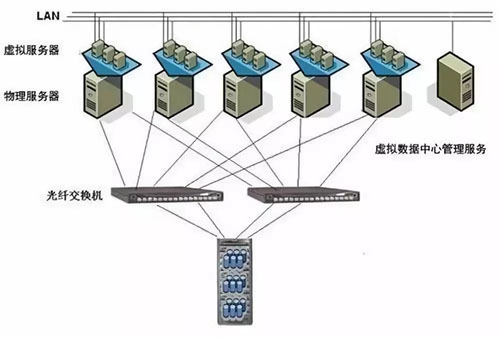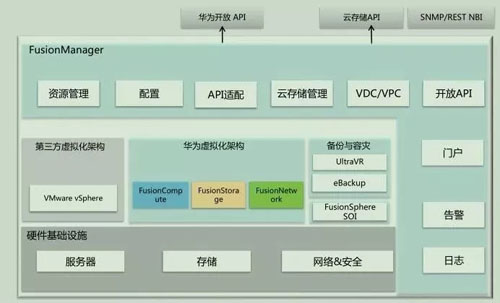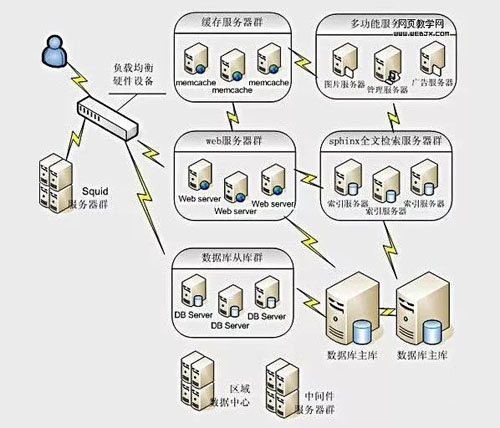First, the importance of SMB deployment virtualization
The design of today's x86 servers has limitations, and only one operating system and application can be run at a time, which poses a challenge for the IT department. Therefore, even a small data center must deploy a large number of servers, and each server has a capacity utilization rate of only 5% to 15%, which is very inefficient, regardless of the standard. Virtualization uses software to simulate hardware and create virtual computer systems. In this way, enterprises can run multiple virtual systems on a single server, that is, run multiple operating systems and applications, which can achieve economies of scale and improve efficiency.
With the rapid development of modern information technology, enterprises are increasingly dependent on IT systems. At the same time, the rapid expansion of enterprise business systems and the continuous growth of data make traditional IT servers face enormous challenges:
Question:
The expansion of enterprise business systems requires more and more servers, resulting in increasing enterprise cost and management pressure. Many servers are running at a much lower level than their actual processing capabilities;
The diversity of enterprise business systems, the server is difficult to integrate effectively, and the utilization rate is not high, resulting in waste of resources;
When the traditional server is down, the disaster recovery time is long, causing the business system to be paralyzed and causing huge losses to the enterprise.
For SME users, there are always more or less concerns before implementing virtualization, especially for enterprises that have been running smoothly for a long time and have mature information. Their biggest concern is whether the entire system is safe after virtualization is implemented. For example, the original unit has 100 applications, each application is on one physical server, and the entire system has 100 physical servers; after virtualization, each application is on one "virtual" server, each with 10 units. Even more virtual machines, so that 10 or fewer physical servers are virtualized instead of the original 100 servers. It turns out that a server is broken, affecting at most this application; now if a server is broken, it will affect 10 or more applications, which will put pressure on the information manager. In addition, is it sufficient to migrate and merge multiple servers into one host? The resolution of these problems reflects the importance of SMB deployment virtualization.
Second, the function of virtualization implementation

Save energy and reduce data center carbon footprint
Server preparation time is faster
Eliminate hardware vendor lock-in
Increase run time
Improve disaster recovery
Isolated application
Extend the life cycle of outdated applications
Help you get into the cloud
Three, how to achieve virtualization

The traditional IT architecture generally adopts an application mode for each server, which results in a small amount of computing resources per application server, and waste of resources; and the deployment mode of a single server, the security of the application server cannot be obtained. Guarantee. If the dual-machine deployment mode is adopted, it will result in greater waste of resources and more expenses.
Introduce the server virtualization solution for the above problems, abstract the server physical resources into logical resources, and turn one server into several or even hundreds of isolated virtual servers. The CPU, memory, disk, I/O and other hardware become Dynamically manage the "resource pool" to improve resource utilization, simplify system management, and achieve server consolidation; and virtualized management software to achieve virtual application server security redundancy.
Four, the advantages of virtualization

1. Improve the efficiency of hardware resource usage
Multiple virtual machines can be opened on one server for different applications, breaking the limitation of one application and one server. Because the time and resources of a specific user are limited, multiple users (applications) can greatly improve the efficiency of the server. Reduce the number of servers, you can:
Reduce investment in purchasing servers
Reduce server operating energy consumption
Downgrade cooling costs
Save room space
2. Avoid software conflicts directly with apps or services
Many applications and services cannot be installed under the same system. In addition, lightweight services are not suitable for occupying the entire server: such as domain controllers, backup domain controllers, dns servers, etc., which require stable and long-lasting resources, but the resources are not large.
3. Improve stability
Realize load balancing, dynamic migration, automatic fault isolation, and reduce shutdown events;
Under the premise of shared storage, with vMotion, virtual machines can be moved quickly before each host, even without shutting down; when HA (high availability) is enabled, virtual machines can automatically drift between hosts;
Even if there is no shared storage, you can move the virtual machine with the virtual machine turned off.
4. Easy to manage, downgrade management costs
Excellent remote management tools to increase server/administrator ratio and reduce data center costs;
When you need to perform maintenance on a physical server, you can remove the above virtual machine to ensure that services are not interrupted.
Application isolation, each application uses a separate virtual machine to reduce interaction.
5. Faster redeployment, simpler backup
The following functions can be implemented: template, clone, snapshot; machine backup; physical machine is converted to virtual machine.
6. Improve IT's flexibility in business with dynamic resource allocation
When business priorities change, you can allocate computing and storage resources more flexibly and faster.
7. Support integration of heterogeneous operating systems to support the continued operation of legacy applications
For example, the virtual solaris x86 system supports the operation of the old software; the investment protection of old software and old hardware.
8. Startup, restart is fast, and the boot process can be controlled remotely
For a physical server, rebooting is very slow and usually takes about 10 minutes. Taking vSphere as an example, esxi host startup and linux (without installing other software) start at the same time, but esxi usually rarely needs to be restarted. Linux is installed as a virtual machine on the esxi host, the restart speed is very fast, and the boot process can be Remote control through the console, you can solve the problem during the startup process without going to the machine room.
9. Solving license issues
Previously purchased licenses for binding macs, if the computer is faulty, can be deployed to the virtual machine to run, keep the same mac address


